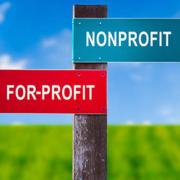Nonprofit start-ups: Form 1023 or 1023-EZ?
If you’re starting up a new 501(c)(3) not-for-profit organization, you likely face many decisions. One of them is which form to use when applying to the IRS for recognition of your tax-exempt status. There are two — Form 1023 and 1023-EZ, a newer, streamlined version of the original form. Let’s take a look.
Traditional route vs. EZ way
Many nonprofits still use the longer Form 1023 because it’s available to every 501(c)(3) organization and there are virtually no restrictions on its use. However, Form 1023 takes time and money to complete. It’s dozens of pages long and accompanied by lengthy instructions. The instructions explain how to fill out the form and list the documents you’ll need. If you decide to use Form 1023, do your homework first. Also know that it will cost $600 to file it. You’ll need to set up a pay.gov account first.
Form 1023-EZ is aimed at smaller nonprofits and is cheaper to file — only $275 (also via pay.gov). It’s only three pages and completing it should take less than half the time it would take to fill out Form 1023.
Work the worksheet
Eligibility for filing Form 1023-EZ isn’t automatic. You first must complete an eligibility worksheet to verify that your organization qualifies to use the form. Note that it only takes one “yes” answer to eliminate Form 1023-EZ as an option. For example, your organization can’t expect to accumulate annual gross receipts of more than $50,000 during the next three-year period. This includes receipts from all sources.
You’ll also be disqualified from using the EZ form if your nonprofit’s assets are valued at more than $250,000. Cash and the fair market value of bank accounts and loans receivable, inventories, bonds, stocks, equipment, and buildings all count toward the limit.
Among other eligibility requirements, your organization must:
- Have been formed in 1) the United States, its states, territories, or possessions; 2) federally recognized Indian tribal or Alaskan native governments; or 3) the District of Columbia; and
- Be organized as a corporation, unincorporated association or trust.
Be sure to complete the entire worksheet.
Getting off on the right foot
So long as your organization passes all the tests on the 1023-EZ eligibility worksheet, you should be safe submitting that form. But if you have questions or concerns, contact tax and legal professionals. Using Form 1023-EZ if you’re ineligible could make your new nonprofit more vulnerable to audits and other IRS scrutiny. And you wouldn’t want to get off on the wrong foot at the start of your organization’s run!
© 2024












